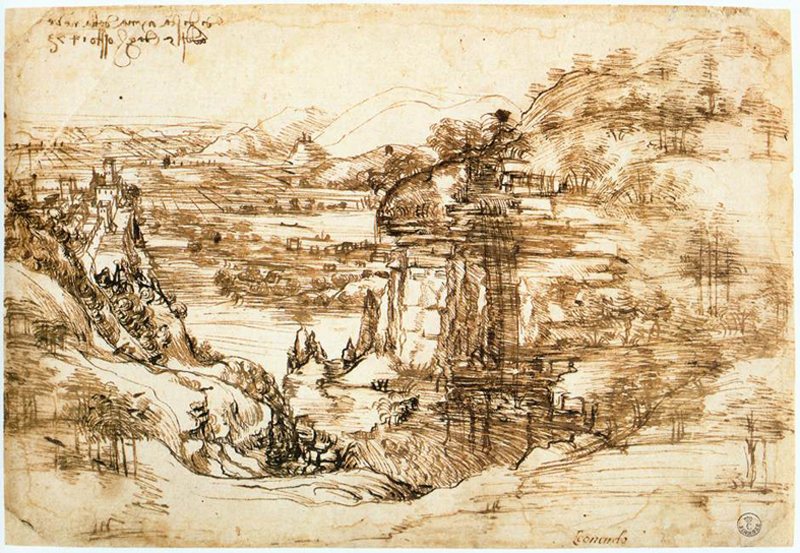The Mindful Mona Lisa: Planetary History

As the third year of this blog begins to draw to a close, it seems fitting to summarize a bit of its arc so far.
Throughout 2020 we focused on the novel “bridge-garment-experience” hypothesis, proposing that the Mona Lisa is an allegorical portrait of Esperienza (meaning both experience and experiment) in which the bridge and garment function as dual metaphors, and how this interpretation aligns with many themes and patterns in Leonardo’s writing and visual art such as his definition of Esperienza as “the common mother of all the sciences and arts.”
In 2021 our scope expanded to include the works of Dante, based on Leonardo’s assertion that “painting is poetry which is not heard, and poetry is a painting which is not seen.” As many scholars and artists over the centuries have found, I believe the interconnections of Leonardo’s work with that of Dante to be both rich and deep.
Finally during 2022, to widen the context again and explore how this hypothesis might inform both science-based art and the current crises of climate change and political upheaval I have tried to juxtapose the first two Florentines to a third and final compatriot – Machiavelli – as a representative of Renaissance political thought. All three figures and their respective legacies have had powerful influence on the formation of modernity. As we adapt to the challenges ahead it may be helpful to reorient our relationship to them and reassess contemporary culture’s alignment toward its own flawed and diverse origins.
Continuing our sequence of planetary and celestial metaphors this month we focus on Saturn, the seventh sphere in Dante’s model, representing Astronomy (fourth and final discipline of the mathematical Quadrivium). Understood by ancient and medieval thought as “number in space and time,” combining the properties of Geometry and Music, this planet’s science may be interpreted as that of the cosmos itself. Saturn’s identity as the deity of Time suits this expansive, long-term frame of reference.
As we practice astronomy today with the James Webb Space Telescope we are still confronting the question of time, the oldest light sources being our most sought-after targets. With this new telescope we will see not just more light but more of the history of the universe. To understand the present we must sometimes look backward toward origins and distant precursors.
A larger view of the cosmos has often been linked to deeper cultural understanding of the present and our local, human challenges. We now know all too well that the history of the planet is profoundly affected by human activity, and even political history seems to have been compressed under the fierce gravity of our present dilemmas. Unlike the serene “golden age” of Saturn, we must now face crises of unprecedented intensity.
For this next major phase of human adaptation -- transitioning to a sustainable modernity -- the three realms of visual art, literature, and political philosophy must function integratively if we hope to find scientific and cultural solutions which preserve nature and human life on earth to the best of our ability.
To this end we should consider emulating Leonardo’s Esperienza, experience and experiment, in all realms: the scientific and artistic, contemplative and cultural, philosophical and political. It is an allegiance we owe not just to ourselves and each other but to the planet itself as home of all known life and its as yet not fully written history.
Next blog: physics and metaphysics
